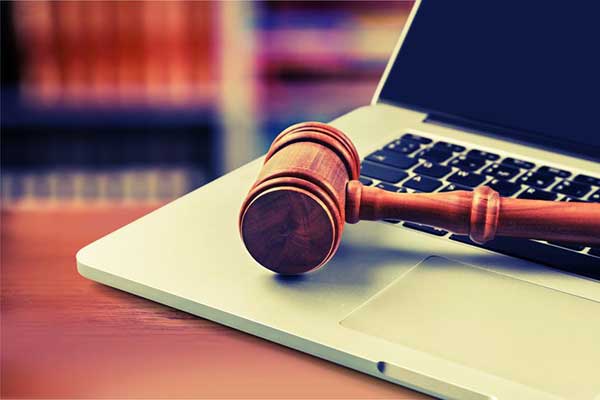Blog

Trusted Northwest Suburban Law Firm
847-944-9400
By Aaron Novasic
When COVID-19 began to wreak havoc on our society last year, it also closed down the justice system as well. But the court system could not remain closed forever, especially as thousands of cases — affecting thousands of lives, communities and businesses — were winding their way through local, state and federal courts.
After the first few months of the pandemic, the court system began to adapt, eyeing new technology as its only way to allow cases to move forward and to allow the justice system to work. But the system needed new guidelines to make it work more efficiently, effectively and fairly for all those involved.
That’s then the Illinois Supreme Court’s March 17, 2020, order directed Illinois courts to hear essential and non-essential court matters and proceedings. Then on May 22, 2020, the Supreme Court entered an order authorizing circuit courts to return to hearing court matters, whether in person or remotely, according to plans adopted by the chief judges. This order instructs that “local plans should continue to promote the use of remote hearings where appropriate,” the document said.
The virtual courtroom was quickly born with easy-to-use Zoom, Cisco Webex and other videoconferencing services at a time when the court system previously resisted even having cameras in the courtroom. The urgency of the global pandemic was too critical to ignore, so quick adjustments were necessary to accommodate the legal cases, while keeping everyone safe from a potentially fatal virus.
Now, a year later, many of us have adopted both personally and professionally to video meetings with family and customers … and so has the court system. Videoconferencing for legal cases has offered some advantages so far. They include: 1) A convenient way to handle cases via your laptop or other device. 2) No parking hassles, parking fees, parking tickets or other transportation fees to worry about. 3) Reduces travel times, weather concerns, and even security reviews inside court buildings. 4) Reduces the possibility of contracting COVID-19 in sometimes crowded courtrooms.
On the other hand, there have been some disadvantages that need continuous oversight. They are: 1) The legal system must ensure that all participants have Internet access and overcome any digital divide so they can participate in the proceedings. 2) Concerns need to be addressed regarding any Sixth Amendment rights, so the defendant retains their right to confront their accusers or witnesses. 3) A jailed prisoner may not have access to videoconferencing equipment to participate fully in their case. 4) A need to ensure all participants can see or participate in the proceedings and to keep those proceedings open to the public, when they are intended to be public.
Many counties around Illinois are starting to commence jury trials remotely, which may have a significant impact on the outcome of those trials. Jurors get to participate and exercise their civic duty from the confines of their own home. While the COVID-19 vaccines roll out nationwide to help protect society, the judicial system likely will continue with remote hearings and other legal matters until herd immunity ensures everyone’s safety first. In the meantime, the virtual courtroom will remain, as it continues to readjust to its new normal while ensuring justice prevails in the near future.